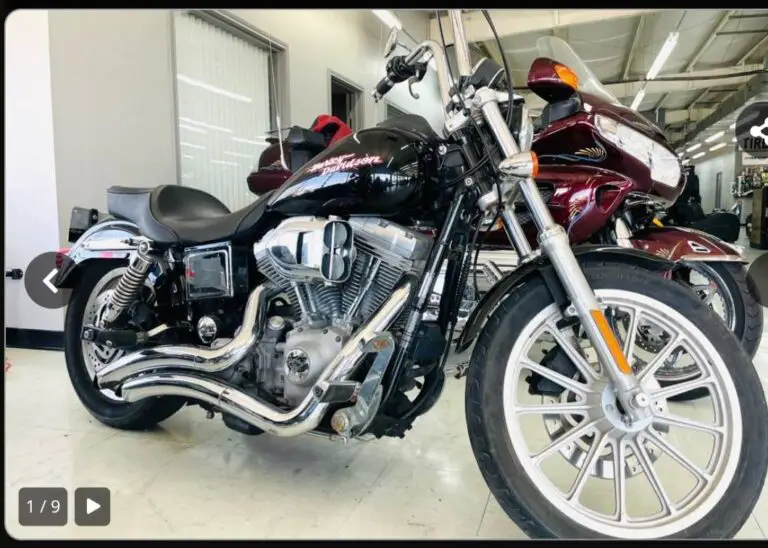What is a Throttle Position Sensor?
Imagine a magic lever inside your motorcycle. This lever tells the engine “Go fast!” or “Slow down!” when you twist the throttle. This lever is not just magic, it’s real and it’s called a Throttle Position Sensor (TPS).
The TPS is an important part of your Harley Davidson. It sends info to the motorcycle’s computer. This tells how much you are twisting the throttle. When it works well, your ride is smooth. When it doesn’t, you may have problems.
Signs of TPS Problems
Like a superhero, you can spot these signs:
- Jerky Rides: Is your motorcycle not running smoothly?
- Power Loss: Does the power drop when you’re riding?
- Check Engine Light: Is the little engine light on the dashboard on?
- Struggle to Start: Does your motorcycle not want to wake up?
- Uneven Idle: Does it sound like “putt-putt” when just sitting?
Why TPS Problems Happen
These problems can happen for different reasons:
- Age: Parts get old, like people’s knees and elbows.
- Dirt: Dirt or grime can mess with the sensor.
- Wear and Tear: Riding a lot can wear out parts.
- Damaged Wiring: Loose or broken wires upset the sensor.
- Bad Calibration: If the sensor isn’t set just right, it acts funny.
How to Check for TPS Issues
Looking into TPS issues is like being a detective. Here’s what you can do:
- Look: Check for any visible damage to the sensor or wires.
- Test: Use a special tool called a multimeter to test the sensor.
- Scan: A scanning tool can read codes that the sensor sends.
- Clean: Removing dirt might fix the issue.

Credit: www.denniskirk.com
DIY: Fixing the TPS Yourself
Do you like fixing things? Here’s how you might fix the TPS:
- Read the Manual: Your motorcycle has a book that tells how to fix things.
- Gather Tools: Find the tools you need to work on your motorcycle.
- Locate the TPS: Find where the TPS is on your motorcycle.
- Set it Right: Sometimes, just turning a screw makes it better.
- Replace: If it’s broken, you’ll need a new one.
- Check Your Work: Make sure everything you did is working right.
It’s like a puzzle, so take your time and be careful.
When to Call a Professional
Sometimes, you need someone with more tools and know-how. This is when:
- The problem keeps happening even after you tried to fix it.
- You don’t feel brave enough to fix it alone.
- There are too many computer codes and it’s confusing.
A professional can help make your motorcycle happy again.
Maintaining Your TPS for a Smooth Ride
To keep your TPS in good shape, do these things:
- Keep your motorcycle clean, especially around the sensor.
- Check the sensor when you do regular motorcycle check-ups.
- Replace old parts before they break and cause problems.
Like brushing your teeth, taking care of your Harley helps a lot.

Credit: www.youtube.com
Conclusion: Keep Riding Smoothly
You now know all about TPS on Harley Davidson motorcycles. A happy TPS makes for a smooth ride. If you see signs of trouble, you know what to look for. You can be the super-fix-it person, or get help from a pro. Ride safe, and enjoy the road. Remember, your motorcycle likes it when you understand it.
Frequently Asked Questions For Harley Davidson Throttle Position Sensor Problems
What Is A Throttle Position Sensor?
A throttle position sensor (TPS) monitors the position of the throttle in an internal combustion engine, including those in Harley Davidson motorcycles, to manage fuel mixture and engine performance.
How To Recognize Tps Issues On Harley Davidson?
Harley Davidson TPS problems may manifest as engine misfires, irregular acceleration, or difficulty in maintaining a steady throttle.
Can Tps Cause Harley Starting Issues?
Yes, a faulty TPS can lead to starting problems due to incorrect air-fuel ratio settings, impacting the ignition process.
What Are Common Harley Tps Failure Symptoms?
Common failure symptoms include erratic idle, hesitant acceleration, engine stalling, and error codes on the motorcycle’s dashboard.



